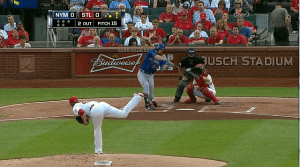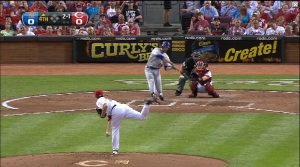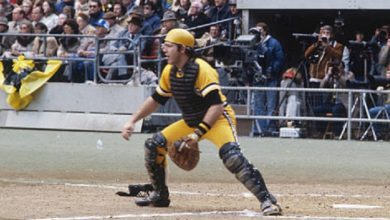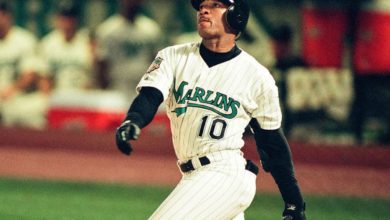

“They’ll start making some mistakes, and I’ll start hitting some homers.”
This is a quote from Ike Davis in The Star-Ledger back in early April when asked about his 4-for-27 slump.1 After reading this, I began to realize targeting and drafting him was huge mistake, but I wanted to wait until a larger sample was accrued before rushing to judgment. The season is approximately a quarter of the way through, and I’ve reached my conclusion.
Ike Davis is like the really hot girl who finally agrees to go on a date with you after many, many requests. After agreeing on a specific time and location, you are filled with excitement and, therefore, attempt to put your best foot forward before the date — you get your haircut, wash your car, buy a new shirt, the whole nine yards. However, that excitement quickly dissipates at the dinner table as you realize she’s the carbon copy of Derek Jeter; her beauty is stunning, but she has nothing interesting to say. As you stare at your dinner plate, it hits you: You realize you would have had a more interesting evening watching a Charlie Kaufman film2 in your apartment with your cat as your date.
Like all Ike Davis owners, I saw an undervalued player with an extremely high fantasy ceiling. During all my drafts, I augmented my roster to mitigate Davis’ weaknesses, specifically drafting two high run-scoring and batting-average players (Norichika Aoki, Austin Jackson, Martin Prado and Alex Gordon). My offensive roster was constructed perfectly, and at the conclusion of the draft, I knew I was going to crush my opponents. Or so I thought.
As of May 15, Ike Davis had a slash line of .169/.261/.288, which is eerily similar to the slash line he had at this point last year: .164/.221/.303. As the 2012 season progressed, Davis went on to salvage his season, hitting 27 home runs with a slash line of.247/.333/.511. It was this performance that convinced me the .188 BABIP to begin the year was the cause for his struggles, and there’s no way his luck will be that bad again.
I’ve watched the majority of his at-bats this year, and I have little room for optimism that he can turn it around. Pitchers are successfully exploiting the holes in his swing and his approach at the plate. In April, it was breaking balls on the outside of the plate, which resulted in a lot of strikeouts via the swing and miss or the look of befuddlement as the ball hit the catcher’s mitt. The reason why he didn’t hit the outside pitch was he was lunging at the ball. Specifically, bending his front leg forward and altering his center of mass3 to the front leg, which resulted in his bat dragging through the zone, creating weak contact. It’s important to note he had the same problem last year, but he fixed it by spreading out his feet in his batting stance.
In addition to outside pitches, he’s now having problems with fastballs up and in, near the letters. The end of result of these pitches is either a swing and miss or foul ball back to the screen. The reason why this is happening is he’s still lunging at the ball, and he’s not getting his hands in the zone quick enough to make solid contact. Compare and contrast (below) where the bat is when it makes contact with the fastball on the inner half of the plate. In 2012 his hands were deeper in the strike zone and his body more parallel to the pitcher.
Since Ike Davis has reverted back to the old habits he displayed at the beginning of last year, it’s no surprise he’s striking out nearly 30 percent of the time (a career high). I’ve attempted to address the mechanical issues on pitches on both halves of the plate, but let’s look at it statistically. The table below shows the slugging percentage, by year, on pitches on various pitch locations. Please note that he only had 149 plate appearances in 2011 so the small sample size caveat applies.
|
Pitch Location |
|||
|
Year |
Inner Half SLG% |
Middle SLG% |
Outer Half SLG% |
|
2013 |
.231 |
.424 |
.239 |
|
2012 |
.384 |
.650 |
.355 |
|
2011 |
.579 |
.706 |
.461 |
|
2010 |
.376 |
.650 |
.337 |
Data courtesy of TruMedia Networks
It looks as though Ike Davis is correct about wanting to wait for pitchers to make mistakes in the middle of the strike zone in order to hit for power. However, this is the major leagues. How often are major-league pitchers going to make a mistake?
This is what Mets manager Terry Collins said in the same Star-Ledger article in response to Ike Davis’ slump: “The one thing that made him very good in spring training is the fact that he went to leftfield and went to centerfield so much. He took a lot of base hits up the middle, a lot of base hits to left-center. We’ve got to get him back doing that because that makes him dangerous, when he can hit the ball the other way.”
It’s been rumored Ike Davis is unwilling to make adjustments based the advice of his coaches, and he stays out too late after games enjoying the night life. I’m not saying that’s a good or bad thing, but it’s something that wouldn’t be an issue if he was performing well.
Hitting at the major-league level is difficult. It requires consistent refinement and adjustment to be successful. The adjustments are there if he’s willing to make them, but, based on what I’ve seen, I don’t see any major changes coming. However, the rub is fantasy owners have to keep him. His value is so low you’ll only get 50 cents on the dollar in trade. You can’t drop him because he has legit 30 home run power and power is the scarcest resource on the waiver wire. Lastly, the fact that he was able to make the necessary adjustments last year to become a solid hitter suggests he’s capable to do it again.
On Friday, I’m benching Ike Davis in my NFBC leagues for players such as Garrett Jones, Matt Joyce and Chris Young until I start to see an improvement.
1. This was brought to my attention by the Effectively Wild Podcast.
2. If you’re under the age of 25, you’ll probably overlook her inchoate personality. But, if you have the time, you should watch Synecdoche, New York.
3. That’s not a baseball term. I have no idea where I came with up with that phrase. If I had to guess, I pulled it from one of my P90x videos.







